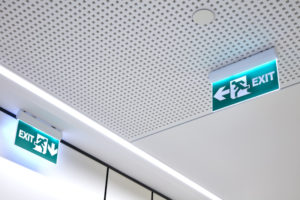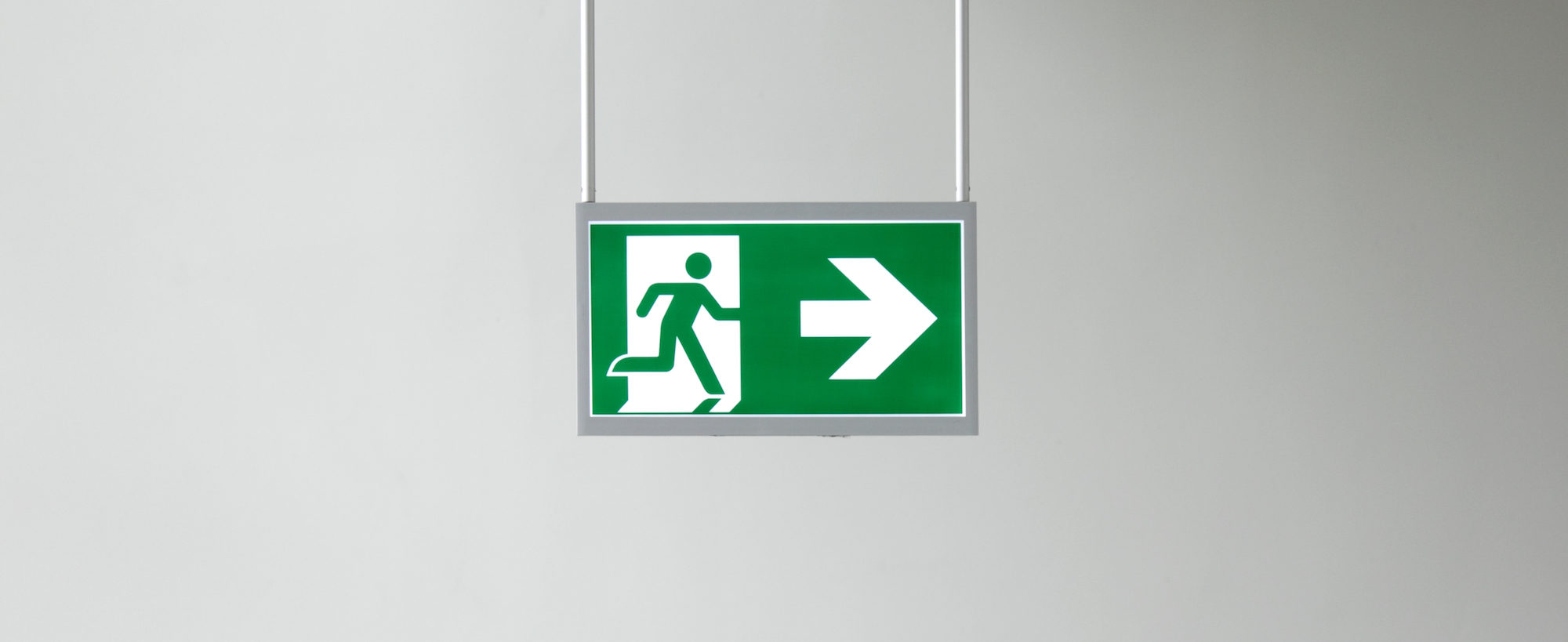 Emergency Lighting Perth
Emergency Lighting Perth
Emergency lighting helps individuals escape buildings in the case of a fire or other internal problem. Commercial properties must adhere to specific emergency lighting standards set in place by the Australian government. These standards help provide a higher degree of safety for Australians who access commercial properties.
If you own a commercial property, it’s vital that you understand the Australian emergency lighting standards. Not adhering to these standards endangers your patrons and leaves your business open to large amounts of liability. Emergency lighting is not a complicated topic, and doing the research and consulting with an electrical company can help you remain in compliance with the Australian standards for emergency lighting.
On this page, we’ll take a look at emergency lighting and overview the types of maintenance required throughout Australia. We’ll also help you determine if it’s worth hiring an external electrical solutions firm to help maintain your emergency lighting system.
What Exactly Are Emergency Lights?
As mentioned previously, exit and emergency lighting is in place to help people escape commercial buildings in the case of a catastrophe. If the internal power network in a building is knocked out, it makes it much more difficult to escape, since there’s no clear pathway to the exit. Emergency lights function even if the internal power system in a building is no longer viable.
Emergency lights use internal batteries so they can function without the need to be attached to your building’s primary power source in case it goes out. Emergency lights help patrons navigate through hallways and rooms, and exit signs point to the closest exit. Emergency lights help people exit the building as fast as possible.
Does My Building Need Emergency Lights?
The emergency lighting requirements are quite complex – you’ll need to assess the Australian standards emergency lighting information to confirm if your building needs them. For the most part, if you operate a commercial building, you will need to install emergency lights and exit lights in the fire-isolated stairways and hallways as well as other locations.
The same standards typically apply to industrial sites. If you operate an industrial site, it’s particularly important you install proper emergency lights. If your business uses heavy machinery or fuels, there’s a high chance that a fire or other emergency situation may present itself.
Lastly, high-rises and other multi-habitation buildings will also need emergency lighting installed. If you’re the developer of a large residential property, it’s essential that you begin the design process with emergency lighting in mind – not doing so may cost you a lot of money in the future.
If you’d like more definitive information on emergency lighting and building requirements, check out the Australian standards 2293.2 emergency lighting systems guide. This is the official government document that governs the standards and provides clear guidance on which buildings need emergency lighting.
Types of Emergency Lighting in Australia
There are two primary forms of emergency lighting available to property owners in Australia: maintained and non-maintained emergency lighting. Below we will explore these two different forms in more detail.
Maintained Emergency Lighting
Maintained emergency lighting is a form of illumination that runs regardless of an emergency event but has its own power supply. A maintained emergency light uses your building’s traditional power source to stay alight throughout the day. If an emergency does occur, the maintained emergency light has a backup battery power source that kicks in to provide lighting for your building’s occupants.
Non-Maintained Emergency Lighting
Non-maintained emergency lighting is a form of light that only starts working in the case of an emergency. When the main power supply stops working, non-maintained emergency lighting will illuminate. This form of lighting will not be active during the regular day-to-day time periods.
Emergency Lighting Regulation
The Australian government also provides regulation on how to maintain emergency lighting. There are testing requirements that help ensure these lights are functioning correctly throughout the year. As the property owner or manager, it’s your job to ensure proper testing is conducted in accordance with Australian regulations standards.
Again, the Australian 2293.2 emergency lighting systems standard has all the information you need to stay within regulations. If you’re unfamiliar with how emergency lighting regulations work, it’s always a good idea to consult an electrical solutions expert.
Usage of Approved Emergency Lighting Devices

It is essential that you use certified emergency lighting devices in your building. Using devices that are not certified by Australian regulations means you are not complying with safety protocols – this will leave you open to liability and may have fatal consequences in the case of an emergency.
Approved emergency lights are tested for durability, heat resistance, functionality, and a range of other performance standards. If you’re not sure what emergency lights are approved for use in Australia, you can contact an electrician or electrical services company to help you assess which products are appropriate for your building. Emergency lighting is a necessary investment in the safety of your building, so take as many precautions as possible.
Emergency Lighting Installation
If you have a new building that needs emergency lighting, it’s essential to use a qualified electrician to install your new system. Incorporating emergency lighting at the start of your projects can make the entire process much more manageable. Your building’s internal wiring system will benefit from a design that incorporates the need for emergency lighting.
There are plenty of great emergency lighting manufacturers in Australia. Ektor Emergency Lighting, Spitfire Emergency Lighting, Stanilite Emergency Lighting, Bardic Emergency Lighting, and Clevertronics Emergency Lighting all provide great products that can take your internal lighting capabilities to the next level.
Emergency Lighting Australia: Installation Costs
Installing emergency lights in Australia will vary in cost depending on the size of the project. You’ll also need to choose the emergency light manufacturing company you want to purchase your lights from. To receive a quote for emergency light installation, you can call Richtek Electrical Solutions for an assessment.
Emergency Lighting Testing
Typically, your emergency lighting will need to be tested every six months. The test will assess the charge of the batteries and ensure that the charge source is functioning correctly. If your battery is not operating, you may need to do more than just replace the battery – it may be an indication that your power charger is not working.
According to emergency exit lighting standards and traditional emergency lighting standards, a 90-minute discharge test is needed every six months. This 90-minute test is intended to test the actual viability of the emergency light in your building.
Many emergency lights come with an emergency lighting test switch. This test switch cuts off the main power supply from the emergency light to test if the emergency function is operating correctly.
Also, the bulbs within the emergency light will need testing to ensure that they’re functioning to their full capacity. Any non-working bulbs or lights will need immediate replacement during the testing procedure.
It’s essential that you understand the importance of this testing. You should use a professional company with experience testing emergency equipment. This is a great way to reduce your liability and focus on the components of your business that matter.
Emergency Lighting Testing Perth
If you’re looking for emergency lighting testing in Perth, Richtek Electrical Solutions can help ensure that your emergency lighting system is operating correctly. We have over a decade of experience working with companies to test their emergency lighting equipment. Our team of qualified electricians works with clients from all around the Perth region.
At present, we help test emergency lighting in Armadale, Bibra Lake, Cannington, Canning Vale, Claremont, Cockburn, Cottesloe, Dalkeith, East Victoria Park, Fremantle, Joondalup, Malaga, Mandurah, Midland, Morley, Myaree, Osborne Park, Perth, Rockingham, Wangara, and Welshpool. We’re happy to make callouts to customers in any of these areas.
If you live outside of these suburbs, give us a call, and we can assess if our electricians can help in your area.
Working with an Electrical Solutions Company
Working with an electrical solutions company can help you improve your emergency lighting standards. Our company employs fully qualified and trained electricians that understand the importance of due diligence. With an electrical solutions company, you have a partner that understands the complexities of emergency lighting.
If there is a problem with your emergency lights, an electrician is best equipped to resolve the issue. Whether it be a problem with your battery, charger port, or power source, our electricians understand how to fix problems. We can also help you install your emergency lighting system when you first begin construction on your building.
If you’re undergoing remodelling or internal construction transformations, Richtek Electrical Solutions can consult on the project to help ensure it meets Australian standards emergency lighting regulations. Richtek Electrical Solutions is happy to form long-term partnerships for regular emergency lighting testing and maintenance.
Emergency Lighting Saves Lives
While Australian regulation requires emergency lighting, it’s also important to recognise its inherent value. Accidents and fires do happen, and you need to prioritise the safety of your building’s occupants in the case of an emergency. Installing, maintaining, and testing your emergency lighting system can help saves lives when catastrophe strikes.




